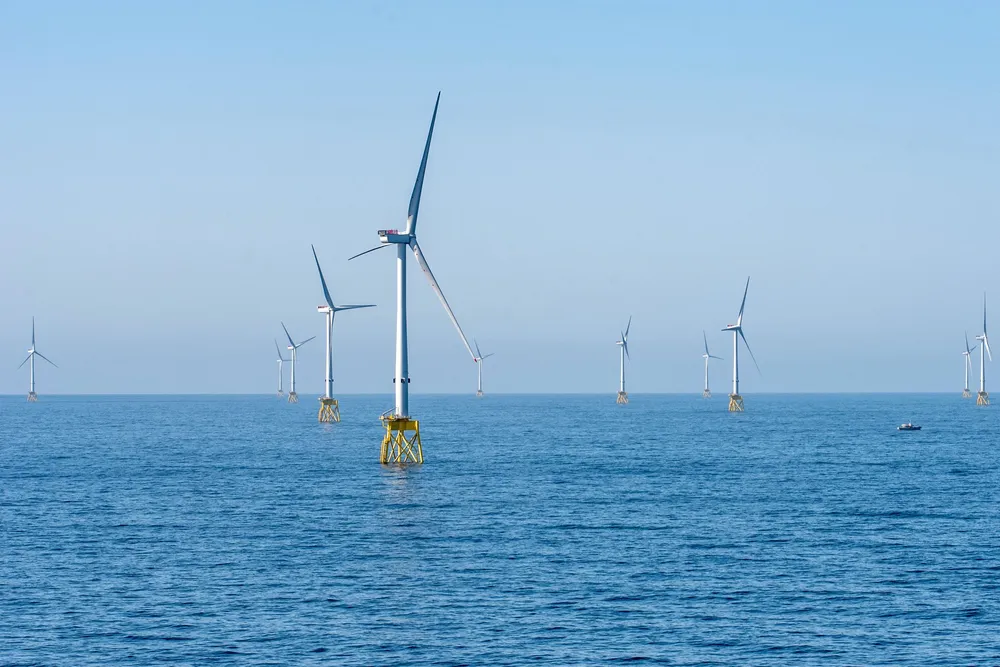Record wind power curtailments a headache for consumers
Scottish projects turned off turbines on a scale that could have powered the whole country

Grid-constrained producers in Scotland's best regions for wind power were paid to curtail 37% of their production in the first half of 2025, according to a report by energy analytics firm Montel.
A total 4.6TWh of clean electricity was turned off across the UK in the first half of 2025, costing, £152m ($203m) in balancing payments largely underpinned by subsidies.
Wind farms in northern Scotland accounted for over 86% of this curtailed volume, at a cost of over £116m and representing nearly 40% of their projected production, the report showed.
The curtailments from these northern wind farms were on a scale that could have covered the needs of every single house in Scotland over the full six-month period, Montel Analytics suggested.
The report highlighted what the authors called a "growing disconnect between renewable generation and grid infrastructure capacity... something which has the potential to raise costs on consumer bills for years to come".
Constraints and bottlenecks on the transmission network were identified as the primary cause of the curtailments, bearing a heavy burden on consumers though the balancing payments that are mostly covered by tariffs on electricity bills.
Curtailments are particularly prevalent in northern Scotland because wind farms in this region are so far away from the big centres of demand in southeastern, central and northwestern England.
The UK transmission grid developed under a regulatory framework that originally encouraged the siting of power stations close to those big demand centres.
“The analysis shows that only 63% of the wind power which could have been generated in (the UK) actually made it to the grid. The cost of turning down that other 37% is passed on to energy bills, meaning consumers are the ones left counting the costs," said Montel Analytics' senior energy market analyst Fintan Devenney.
The report said the findings highlighted the challenge that governments face in balancing their decarbonisation goals against consumer costs and security of supply.
The rollout of wind projects in Scotland is not currently expected to slow down. In the
Scotwind leasing rounds in 2022, 20 offshore wind projects acquired seabed rights in Scottish waters.
Should all these projects be completed, almost 30GW of additional wind generation capacity would be added to the Scottish grid, the report noted. These projects alone would increase the total Scottish wind generation capacity more than threefold.
"If local flexibility and grid capacity were to remain at current levels, curtailment volumes and costs could rise by a similar order of magnitude," the report noted.
"Unless policymakers pay attention to the need to marry renewable power with public systems and infrastructure, then an outdated transmission network could continue to drive up consumer bills," it warned.
In the UK, Montel said failure to keep up with this challenge would mean the country's new National Energy System Operator (NESO) is left to operate a network that is "potentially unfit for the net-zero future”.
The UK government has been attempting to tackle these problems by reforms of the planning and consenting system for grid infrastructure and a promised reform of transmission charges.
Between a rock and a hard place
However, policy-makers increasingly find themselves under attack from two sides, with opposition politicians criticising the rising cost of wind farm curtailments but campaigners also objecting to the impact on rural landscapes of a massive expansion in transmission infrastructure.
“Now is the time for government to come together with industry and build the holistic view of policy which will enable the optimal siting of generation, sufficient investment in grid infrastructure and the correct investment signals to help alleviate grid constraints," said Devenney.
"The Strategic Spatial Energy Plan (SSEP) and the wider reformed national market workstream will be key to achieving these aims.”
The report also found that Ireland curtailed 905GWh across the Irish Single Energy Market (SEM), enough to power all homes in County Dublin for six months. No balancing payments were made to renewable assets in Ireland due to market rules, although this is set to change soon.
(Copyright)